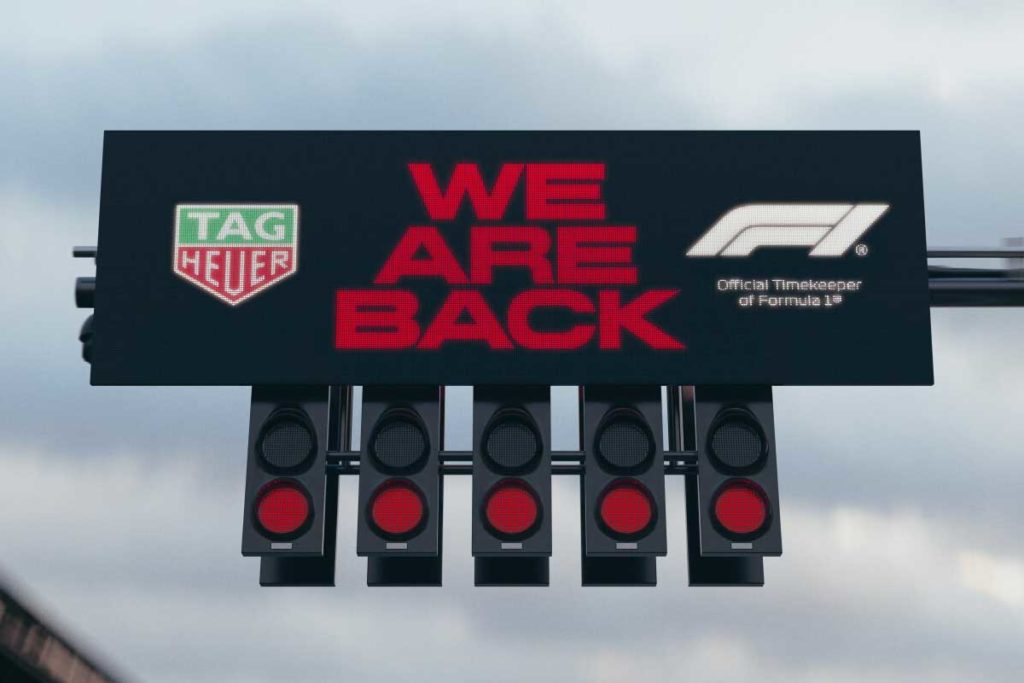
After several years' absence, TAG Heuer is making a comeback in Formula 1. This landmark event testifies to the renaissance of the watch brand, now under the leadership of Antoine Pin, CEO of TAG Heuer, and Frédéric Arnault, CEO of the LVMH Group's Watches division. From 2025, TAG Heuer will be the Official Timekeeper of F1, succeeding Rolex, which has been a partner of the sport since 2013.
Back to basics
TAG Heuer is no stranger to the world of F1. In 1969, it became the first luxury brand to display its logo on an F1 car, and in 1971, it became the first team sponsor. With an impressive history of 239 victories, 613 podium finishes, and 15 drivers' world championship titles, the brand has been a major player in the world of F1. This reintegration marks a return to the brand's roots, a nod to its origins and long-standing commitment to the world of motorsport.
TAG Heuer's transformation
Under the leadership of Frédéric Arnault, son of luxury goods giant Bernard Arnault, TAG Heuer has undergone an impressive transformation. The brand has reinvented itself, notably with the launch of high-end connected watches in 2022, and a partnership with Porsche for its watches in 2021. These initiatives have doubled the average selling price of TAG Heuer watches to over 3,200 euros. The brand's sales, meanwhile, have increased by 50% since Frédéric Arnault took over in 2014, a veritable remontada for this watchmaking house. Since the beginning of 2024, Frédéric Arnault has been steering the Watch division, overseeing the Hublot, TAG Heuer and Zenith brands. Antoine Pin is the current CEO of the TAG Heuer brand.
A strategic partnership with an evolving F1 audience
TAG Heuer's return to F1 coincides with the sport's rise under the Liberty Media era. Formula 1With a worldwide audience expected to exceed 1.5 billion viewers by 2024, TAG Heuer is becoming increasingly popular, attracting a new generation of fans. This partnership between TAG Heuer and F1 goes far beyond mere visibility: it symbolizes a sharing of common values. Both brands are synonymous with precision, performance and innovation. As TAG Heuer CEO Antoine Pin pointed out, "In a sport defined by mental resilience, physical strength, strategy, innovation and performance, it's only natural that TAG Heuer should be at the heart of F1."
Rolex's reaction
Since 2013, Rolex had held the position of F1's official timekeeper, investing around $50 million each year in the partnership. However, things have changed. While interest in F1 has been growing since Liberty Media acquired the sport in 2017, this appeal has now moved away from Rolex's strategy.. With an increasingly young audience and a strong presence on social networks, F1 is attracting a demographic less in tune with Rolex's traditional customer profile.
Rolex now prefers to associate itself with events aimed at a more mature audience, potentially composed of future customers. The Swiss brand chooses to focus on an audience that sees its watches as "dream objects to be worn", rather than on products perceived as investments prized by the masses. So, while Rolex's departure from F1 may come as a surprise, it's not a real loss for the brand, which even seems to welcome it, having a different long-term vision.